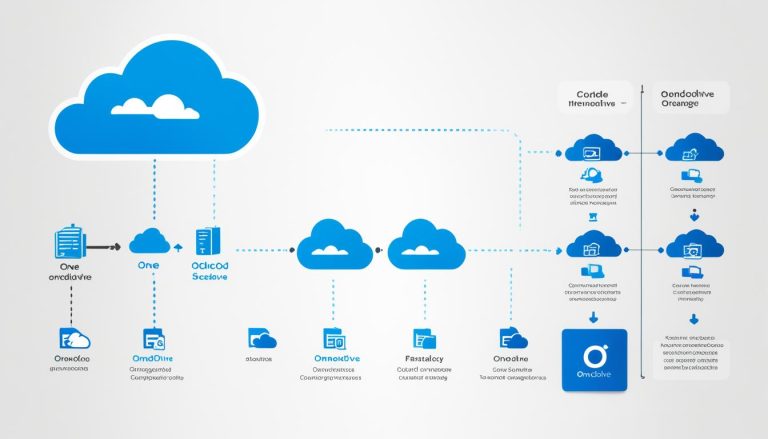Insightful Look at ‘What is Perl’: Your Ultimate Guide
Perl is a powerful and versatile programming language that has been around since 1987. It offers a range of features and capabilities that have made it popular among developers. In this ultimate guide, we will explore the basics of Perl programming and scripting, its features, and its relevance in today’s tech-driven world.
Key Takeaways:
- Perl is a flexible and versatile programming language.
- It is often used for system administration, web development, and database management.
- Perl has a strong community of developers who contribute to its development and maintain a wide range of libraries and modules.
- Perl supports regular expressions and has powerful text processing capabilities.
- Understanding Perl basics and syntax is crucial for getting started with programming in Perl.
Introduction to Perl
Perl is a high-level, interpreted programming language that has gained popularity for its powerful text processing capabilities and flexibility. It is designed to be easy to read and write, making it an accessible language for both beginners and experienced programmers. With its unique syntax and extensive library of modules, Perl offers a wide range of features that make it a versatile language for various tasks.
One of the key features of Perl is its ability to handle string manipulation efficiently. It provides built-in functions and operators that allow developers to quickly manipulate strings, arrays, and hashes. Perl also supports regular expressions, which are powerful tools for pattern matching and data extraction. This makes Perl a popular choice for tasks that involve processing and manipulating text, such as web scraping, data parsing, and file manipulation.
Perl is compatible with multiple operating systems and platforms, including Unix, Linux, Windows, and macOS. This cross-platform compatibility makes it a versatile choice for developers working on different environments. Additionally, Perl has a strong community of developers who contribute to its development and maintenance. This active community ensures regular updates and improvements to the language, as well as a vast collection of libraries and modules that can be easily integrated into Perl projects.
Table: Key Features of Perl
| Feature | Description |
|---|---|
| Text Processing | Perl excels in text processing tasks, offering powerful string manipulation capabilities and support for regular expressions. |
| Cross-Platform Compatibility | Perl runs on multiple operating systems and platforms, ensuring flexibility and portability for developers. |
| Extensive Library of Modules | Perl has a vast collection of modules and libraries that provide additional functionality and can be easily integrated into projects. |
| Community Support | Perl has a strong and active community of developers who contribute to its development and maintenance, ensuring regular updates and support. |
Getting Started with Perl Programming
To start programming in Perl, you need to have a basic understanding of its syntax and fundamental concepts. Perl scripts are executed line by line, and each line is terminated by a semicolon. Variables in Perl are represented with a leading dollar sign ($), for example, $name. Perl has built-in functions for common operations, such as printing to the console (print), reading user input (), and performing mathematical calculations (sqrt, sin, cos).
Perl supports different data types, including scalar variables (single values), arrays (lists of values), and hashes (key-value pairs). Understanding these basics will lay the foundation for more complex Perl programming.
Perl Syntax Example:
In Perl, the syntax for printing a message to the console is:
Perl Functions Example:
The following example demonstrates the use of the sqrt function to calculate the square root of a number:
Perl Variables Example:
In Perl, you can assign a value to a variable using the assignment operator (=). For example:
By familiarizing yourself with Perl’s syntax, functions, and variables, you’ll be well-equipped to write your first Perl programs and explore the full potential of the language.
Perl for Scripting
Perl is widely recognized and appreciated for its scripting capabilities. It is a versatile language that excels in automating repetitive tasks and processing large amounts of data. With its built-in features, Perl makes it easy to work with files, directories, and command line arguments, making it a go-to choice for various scripting tasks.
One of the key reasons Perl is favored for scripting is its powerful text processing capabilities and robust support for regular expressions. These features make Perl an excellent choice for tasks that involve data manipulation and transformation. Whether it’s renaming files, searching and replacing text in multiple files, generating reports, or parsing log files, Perl scripting proves to be efficient and reliable.
Perl is widely used in system administration for automating routine tasks and managing server configurations. The language provides seamless integration with system utilities, allowing sysadmins to efficiently manage files, directories, and processes. Perl is also capable of extracting and analyzing data from log files and performing network operations, making it an indispensable tool for system administrators.
Table: Popular Uses of Perl Scripting
| Domain | Use Cases |
|---|---|
| System Administration | Automating tasks, managing server configurations, monitoring system resources |
| Web Development | CGI programming, generating dynamic web content, interacting with databases |
| Data Manipulation | Processing and transforming large amounts of data, parsing log files |
| Automation | Automating repetitive tasks, generating reports |
Perl’s scripting capabilities, coupled with its extensive library of modules, make it a powerful language for various use cases. Whether you’re a sysadmin automating system management tasks, a web developer generating dynamic web content, or a data analyst processing large datasets, Perl scripting provides the flexibility and efficiency you need to get the job done.
Object-Oriented Programming in Perl
Perl also supports object-oriented programming (OOP), which allows developers to create reusable and modular code. In Perl, objects and classes are created using packages, which encapsulate data and behavior. Classes define the blueprint for objects, specifying their attributes (data) and methods (functions). Perl supports inheritance, enabling classes to inherit properties and methods from other classes. This promotes code reuse and simplifies the maintenance and extension of Perl programs.
By harnessing the power of object-oriented programming in Perl, developers can create more scalable and maintainable code. They can design classes that represent real-world entities, define their properties, and encapsulate their behavior. In addition, objects can interact with each other through method calls, enabling the construction of complex and interconnected systems.
Let’s take a look at an example:
“In Perl, a class can be defined using the
keyword followed by the name of the class. Methods can be defined using the
keyword, and attributes can be accessed using the
keyword. Here’s an example of a simple class in Perl:
2
3
4
5
6
7
8
9
10
11
12
13
14
15
16
17
18
19
20
21
sub new {
my $class = shift;
my $self = {
name => shift,
age => shift,
};
bless $self, $class;
return $self;
}
sub get_name {
my ($self) = @_;
return $self->{name};
}
sub get_age {
my ($self) = @_;
return $self->{age};
}
}
This example demonstrates the creation of a class called
1 | Person |
. It has two methods,
1 | get_name |
and
1 | get_age |
, which return the name and age of a person object, respectively.
By utilizing object-oriented programming in Perl, developers can build more structured and flexible applications, enhancing code reusability and maintainability.
Perl and Web Development
Perl has a long-standing history in web development and continues to be a popular choice for building dynamic websites and web applications. With its support for Common Gateway Interface (CGI) programming, Perl can generate dynamic web content by interacting with web servers. Whether it’s processing form data, generating HTML pages, or interacting with databases, Perl proves to be a versatile language for web development.
One of the key advantages of using Perl for web development is its powerful text processing capabilities and regular expression support. This makes it an ideal choice for tasks that involve data manipulation, such as parsing log files or performing complex text transformations. Perl’s flexibility allows developers to easily integrate it with other tools and languages, making it a valuable asset for creating robust and efficient web applications.
Furthermore, the Perl community has developed a range of web frameworks that provide a structured and efficient approach to web development. Frameworks like Catalyst and Dancer offer developers a solid foundation for building web applications, allowing them to focus on the core functionality rather than reinventing the wheel. These frameworks come with built-in features and conventions that streamline the development process and enhance code maintainability.
Perl Web Frameworks
| Framework | Description |
|---|---|
| Catalyst | A powerful framework that follows the Model-View-Controller (MVC) architectural pattern. It provides a flexible and extensible foundation for building web applications of any size. |
| Dancer | A lightweight and easy-to-use framework that emphasizes simplicity and rapid development. Dancer is well-suited for small to medium-sized web projects. |
| Mojolicious | A full-stack web framework that excels in real-time web applications and APIs. It offers a wide range of features, including a built-in web server and WebSocket support. |
While other languages such as Python and PHP have gained popularity in recent years, Perl still maintains a dedicated community of web developers who appreciate its power and flexibility. The extensive documentation and resources available within the Perl community make it easier for developers to learn and enhance their Perl skills. With its rich history and continuous development, Perl remains a relevant and valuable language for web development.
Perl for System Administration
When it comes to system administration, Perl has long been a preferred language for its versatility and powerful text processing capabilities. With Perl, sysadmins can efficiently automate repetitive tasks, manage server configurations, and monitor system resources. Its ability to interact with system utilities and seamlessly handle files, directories, and processes makes it a valuable tool for sysadmins looking to streamline their workflows.
One notable advantage of using Perl for system administration is its automation capabilities. Perl scripts can be written to perform tasks such as server backups, log file analysis, and software installations, saving sysadmins valuable time and effort. By automating routine tasks, sysadmins can focus on more critical aspects of their work, ensuring the smooth operation of their systems.
Additionally, Perl offers a wide range of sysadmin tools and modules that further enhance its effectiveness in system administration. These tools provide essential functionalities like system monitoring, network operations, and log file parsing. Whether it’s extracting data from log files, generating reports, or managing network resources, Perl’s robust ecosystem of sysadmin tools has got you covered.

Table: Perl Sysadmin Tools
| Tool | Description |
|---|---|
| Net::Ping | A module for network troubleshooting by sending ICMP echo requests and analyzing the responses. |
| Log::Log4perl | A flexible and powerful logging tool for managing and analyzing log files. |
| Net::SSH::Perl | A module that enables secure remote management and administration of systems using SSH. |
| File::Find | A module for searching and traversing directories to perform operations on files. |
| Proc::ProcessTable | A module for extracting information about running processes on the system. |
These are just a few examples of the many tools available for sysadmins using Perl. With Perl’s extensive library of modules and its community’s continuous contributions, sysadmins have access to a vast array of tools to meet their specific needs.
In summary, Perl’s versatility, automation capabilities, and comprehensive selection of sysadmin tools make it a top choice for system administration. Whether it’s simplifying system management tasks or streamlining complex workflows, Perl provides the necessary tools and functionalities to empower sysadmins in their daily work.
Testing and Debugging Perl Programs
Testing and debugging are crucial parts of the software development process, and Perl provides various tools and frameworks to facilitate these activities. Whether you are a beginner or an experienced Perl programmer, having a robust testing and debugging strategy is essential to ensure the reliability and quality of your code.
Perl testing involves writing tests to verify the correctness and expected behavior of your Perl programs. Perl has built-in testing modules, such as Test::Simple and Test::More, which provide a convenient way to write unit tests. These modules allow you to define test cases, make assertions, and check the output of your code against expected results. By regularly running tests, you can catch and fix any bugs or regressions early in the development process.
Perl debugging is the process of identifying and fixing errors or bugs in your Perl programs. Perl provides several tools and techniques to aid in debugging. The Perl debugger is a command-line tool that allows you to step through your code, set breakpoints, inspect variables, and trace the execution flow. Additionally, there are debugging modules such as Devel::DProf and Devel::Cover that provide more advanced profiling and code coverage analysis.
| Perl Testing Frameworks | Description |
|---|---|
| Test::More | A robust testing framework that provides a wide range of assertion functions and utilities for writing comprehensive tests. |
| Test::Simple | A lightweight testing framework that provides a simple and intuitive interface for writing basic tests. |
| Test::MockObject | A module for creating mock objects and stubs to simulate different scenarios in your tests. |
| Test::Class | A testing framework that allows you to organize your tests into classes and methods, providing a more structured approach. |
In conclusion, testing and debugging are vital aspects of Perl programming. By incorporating a robust testing framework and utilizing the available debugging tools, you can ensure the correctness and reliability of your Perl programs. Implementing a systematic approach to testing and debugging will help you catch and rectify errors early, resulting in more efficient and high-quality code.
Perl Community and Resources
In the world of Perl programming, the community is known for its strong support and collaboration. Developers from all over the globe come together to share their knowledge, seek help, and contribute to the growth of the Perl ecosystem. The Perl community is vibrant and active, with numerous online resources, forums, and mailing lists dedicated to supporting Perl developers at all levels of expertise.
One of the most valuable resources for Perl developers is the official Perl documentation, also known as perldoc. This comprehensive documentation serves as a guide for understanding the language’s syntax, features, and best practices. It provides detailed explanations, code examples, and references to Perl modules and functions. Additionally, websites like CPAN (Comprehensive Perl Archive Network) offer access to thousands of Perl modules and libraries, further expanding the resources available to Perl developers.
Aside from documentation and online resources, Perl developers can benefit from engaging with the community through conferences and meetups. These events provide opportunities to network, learn from experienced developers, and stay up to date with the latest advancements in the Perl programming world. The Perl community is known for its welcoming and supportive atmosphere, making it an ideal place for both beginners and seasoned professionals to connect and grow.
The Importance of the Perl Community
The Perl community plays a vital role in the growth and evolution of the language. Through their collective efforts, they continuously improve Perl, develop new modules, and contribute to the overall quality of the language. The community’s dedication to Perl ensures that it remains a relevant and valuable tool for developers around the world.
The Perl community is a source of inspiration and guidance, providing a platform for developers to collaborate, exchange ideas, and solve problems together.
If you’re new to Perl or looking to expand your Perl skills, tapping into the Perl community and resources is a wise decision. By connecting with fellow developers and leveraging the wealth of knowledge available, you can accelerate your learning, gain insights, and become a more proficient Perl programmer.
| Advantages of the Perl Community | Disadvantages of the Perl Community |
|---|---|
|
|
Advantages and Disadvantages of Perl
Perl is a powerful programming language that offers several advantages for developers. Here are some of the key benefits of using Perl:
- Flexibility: Perl is highly flexible and allows developers to write code in their preferred style. It provides multiple ways to accomplish tasks, allowing for creativity and customization.
- Rich library: Perl has a vast collection of built-in functions and modules that make it easy to accomplish complex tasks. Developers can leverage these resources to save time and effort in their projects.
- Text processing: Perl excels in text processing and manipulation. It offers powerful regular expression support, making it an ideal tool for tasks such as data extraction, pattern matching, and text parsing.
- Integration: Perl can seamlessly integrate with other languages and tools, making it a valuable asset in a mixed technology environment. It can be used alongside languages like C, Python, and JavaScript, enhancing its functionality and versatility.
Despite its numerous advantages, Perl also has some disadvantages that developers should be aware of:
- Readability: Perl’s flexibility can sometimes result in less readable code. Its syntax allows for various shortcuts and concise expressions, but they can be difficult to understand, especially for beginners and those unfamiliar with the language.
- Learning curve: Perl has a steeper learning curve compared to some other programming languages. Its unique syntax and extensive feature set may require additional time and effort to master.
- Popularity: While Perl remains a powerful language, its popularity has declined in recent years, particularly in favor of languages like Python and Ruby. As a result, finding resources and support for Perl projects may be relatively more challenging.
When to use Perl
Perl is a suitable choice for various use cases:
- Scripting: Perl’s automation capabilities and text processing features make it an excellent choice for tasks that involve file manipulation, data extraction, and system administration.
- Web development: Perl’s support for CGI programming and web frameworks makes it a viable option for building dynamic websites and web applications.
- Data analysis: Perl’s text processing capabilities and regular expression support make it well-suited for parsing and analyzing large volumes of data.
| Advantages of Perl | Disadvantages of Perl |
|---|---|
| Flexibility | Readability |
| Rich library | Learning curve |
| Text processing | Popularity |
| Integration |
The Future of Perl
As a dedicated member of the Perl community, I am excited to discuss the future of Perl and its continued development. Despite the rise of other programming languages, Perl has a strong and loyal user base that keeps pushing the language forward. The Perl community is known for its passion, creativity, and commitment to improving the language.
The future of Perl lies in its ongoing development and adaptation to new technologies and trends. The community is actively working on improving performance, enhancing features, and addressing security concerns. With each new release, Perl becomes more efficient, powerful, and user-friendly.
The Perl community also recognizes the importance of providing modern and efficient tools for Perl development. There are several frameworks and libraries being actively developed that make it easier to build Perl applications. These tools aim to streamline the development process, promote best practices, and improve the overall developer experience.
Perl continues to be a versatile and reliable language, and its future is bright. With the dedication and contributions of the Perl community, I am confident that Perl will continue to evolve and thrive.
The Role of the Perl Community
The Perl community has always been the backbone of the language’s success. It is a vibrant and collaborative community that supports developers at all levels of expertise. There are numerous online resources, forums, and mailing lists where developers can seek help, share their knowledge, and contribute to the Perl ecosystem.
Comprehensive documentation, such as the official Perl documentation (perldoc) and CPAN, provides valuable resources for developers looking to enhance their Perl skills and stay up to date with the latest developments. The Perl community’s commitment to sharing knowledge and providing support ensures that Perl remains a relevant and powerful language in the future.
In Conclusion
The future of Perl is promising, thanks to the dedication of the Perl community and ongoing development efforts. Perl’s versatility, extensive library of modules, and strong community support make it a valuable tool for developers. While other languages have gained popularity, Perl remains an essential language for specific use cases. By staying innovative and adapting to the changing technological landscape, Perl will continue to be a relevant and influential language for years to come.
Conclusion
In summary, Perl is a powerful and versatile programming language that offers a range of features and capabilities. It is widely used in scripting, web development, system administration, and other domains. With its flexibility, extensive library of modules, and strong community support, Perl remains a valuable tool for developers.
While other languages have gained popularity, Perl continues to have a dedicated user base and remains an important language for specific use cases. By understanding the fundamentals of Perl programming, developers can leverage its capabilities to build robust and efficient applications.
In conclusion, Perl’s strengths lie in its powerful text processing capabilities, regular expression support, and seamless integration with other languages and tools. Despite its challenges, Perl’s relevance in today’s tech-driven world is evident. By staying connected to the Perl community and exploring its vast resources, developers can continue to harness the power of Perl and stay ahead in their programming endeavors.
FAQ
What is Perl?
Perl is a programming language that was created in 1987 by Larry Wall. It is known for its flexibility and versatility, making it a popular choice for developers.
What are the key features of Perl?
Perl’s key features include its extensive library of modules, support for object-oriented programming, and its ability to seamlessly integrate with other languages and tools.
What are some common uses of Perl?
Perl is often used for tasks such as system administration, web development, and database management. It is also widely used for scripting, automation, and text processing.
How do I start programming in Perl?
To start programming in Perl, you need to have a basic understanding of its syntax and fundamental concepts. This includes knowledge of variables, functions, and data types.
Is Perl still relevant in today’s tech-driven world?
Yes, Perl is still relevant in today’s tech-driven world. While other languages have gained popularity, Perl remains a valuable tool for specific use cases and has a dedicated user base and strong community support.
How can I learn more about Perl and enhance my skills?
The Perl community offers numerous online resources, forums, and mailing lists where you can seek help, share knowledge, and contribute to the Perl ecosystem. The official Perl documentation (perldoc) and websites like CPAN (Comprehensive Perl Archive Network) provide access to comprehensive documentation, modules, and libraries.
What are the advantages and disadvantages of Perl?
Perl offers a rich set of built-in functions, powerful text processing capabilities, and flexibility. However, its syntax can be challenging for beginners, and its flexibility can sometimes lead to less readable code. It is important to consider the specific requirements of your project when deciding whether to use Perl.
What is the future of Perl?
The Perl development community continues to actively develop and maintain the language, ensuring its relevance and adaptability to new technologies and trends. The future of Perl lies in the continued dedication and contributions of its community.
- About the Author
- Latest Posts
Janina is a technical editor at Text-Center.com and loves to write about computer technology and latest trends in information technology. She also works for Biteno.com.






